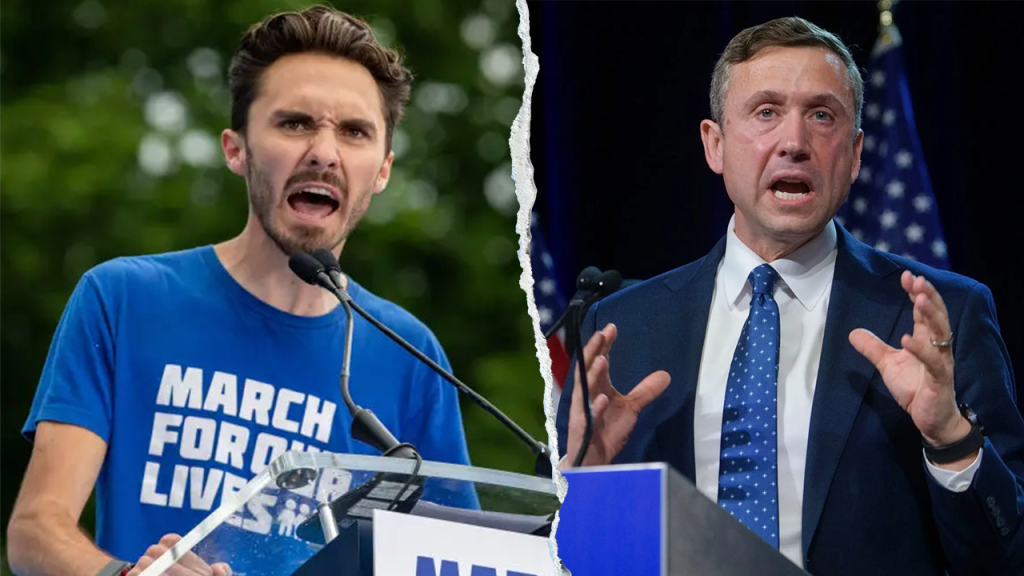In the aftermath of significant electoral setbacks, the Democratic Party is undergoing a period of introspection and tumult. With infighting escalating among its leadership, the DNC is grappling with calls for revitalization and a push for candidates who resonate with younger voters. The stage is set for a critical reevaluation of the party’s direction as midterm elections approach, with leaders like DNC Chairman Ken Martin and Vice Chairman David Hogg at the forefront of this internal struggle.
| Article Subheadings |
|---|
| 1) The Democratic Party’s Dilemma |
| 2) An Ultimatum for Unity |
| 3) Age and Leadership Concerns |
| 4) Grassroots Movements and Young Voices |
| 5) Future of the Democratic Party |
The Democratic Party’s Dilemma
The Democratic Party is finding itself at a crossroads following disappointing results in the last election cycle. Coming out from a cycle where they lost the presidency, Senate control, and were unable to reclaim the House, party officials are searching for answers. The apparent failures have prompted many within the party to blame both election strategy and aging leadership. As members of the Democratic National Committee (DNC) analyze their missteps, it becomes essential to recognize the need for a thorough investigation into what went wrong and how they can move forward effectively.
An Ultimatum for Unity
A significant point of contention is the directive issued by DNC Chairman Ken Martin to party officials, particularly Vice Chairman David Hogg. In light of Hogg’s advocacy for mounting primary challenges against Democratic incumbents whom he views as ineffective, Martin has called for unity, stating that party officers should not interfere in primary elections. He declared,
“Let me be unequivocal. No DNC officers should ever attempt to influence the outcome of a primary election.”
This stark warning indicates a commitment to keeping the party aligned while navigating the growing discontent among both moderate and progressive factions.
Age and Leadership Concerns
Compounding these issues is a growing concern regarding the age of existing leadership within the Democratic Party. The retirement announcement by Dick Durbin, among other older politicians, has sparked a conversation about the viability of leaders who may struggle to connect with a younger voter base. Concerns are emerging about whether older members of Congress can effectively attract and retain new supporters. Durbin, at 80 years old, explained the difficulty of committing to an eight-year political journey, a sentiment reflecting the urgency for new, more energetic representatives to emerge. Analysts suggest that the fallout from prior administrations has created a “contamination” effect, leaving many older Democrats vulnerable to criticism.
Grassroots Movements and Young Voices
There is also a notable influx of activist voices within the party who are pushing for change from the ground up. Prominent younger figures, such as Kat Abughazaleh and Mike Sacks, are vocalizing their intentions to dismantle traditional tactics in favor of more fervent, truthful, and blunt messaging. These candidates argue that the party must adapt to a new political landscape, one where authenticity and directness appeal to disillusioned voters. As Abughazaleh proclaimed,
“I say it’s time to drop the excuses and grow a f***ing spine.”
These sentiments are reflective of a broader generational shift within the party, emphasizing the necessity for fresh perspectives and anger towards the current political climate.
Future of the Democratic Party
As the Democrats navigate these turbulent waters and brace for upcoming primaries and midterm elections, their path forward remains uncertain. The pressure is on them to unify their factions and address the legitimate concerns surrounding age, leadership, and effective strategies. With rising tensions and grassroots movements that advocate for progressive changes, the Democratic Party must respond quickly and effectively. Leaders within the party are tasked with taking these conflicts into account while ensuring they do not fracture the party completely. This urgency for alignment comes as Democrats prepare to hold town halls and engage with constituents who are eager for answers about the party’s direction.
| No. | Key Points |
|---|---|
| 1 | Democrats are facing significant challenges following the loss of key elections. |
| 2 | DNC Chairman Ken Martin issued an ultimatum to ensure party neutrality in elections. |
| 3 | Retiring leaders raise concerns about the ability of older members to appeal to younger voters. |
| 4 | Younger voices within the party are advocating for more transparency and accountability. |
| 5 | The future of the Democratic Party hinges on addressing these internal conflicts and reestablishing their electorate’s trust. |
Summary
In conclusion, the Democratic Party is at a pivotal junction as it addresses the stark challenges and conflicts exposing rifts within its leadership. With internal strife between established figures and rising progressive activists, the party must strategize carefully to reclaim its influence in upcoming elections. The significance of these shifts will not only define the party’s direction but also shape the broader political landscape in the years to come.
Frequently Asked Questions
Question: What challenges is the Democratic Party currently facing?
The Democratic Party is facing significant challenges, including internal conflict between moderate and progressive factions, concerns about age and leadership, and a need to reconnect with younger voters.
Question: How is the DNC addressing leadership issues?
The DNC is attempting to address leadership issues through mandates for party officers to remain neutral in primaries, thereby promoting unity while navigating discontent among party members.
Question: What impact do younger candidates have on the party’s future?
Younger candidates emphasize the need for authenticity and direct messaging, which could reshape the party’s outreach and appeal to disillusioned voters, potentially bringing new energy and perspectives to the Democratic Party.


